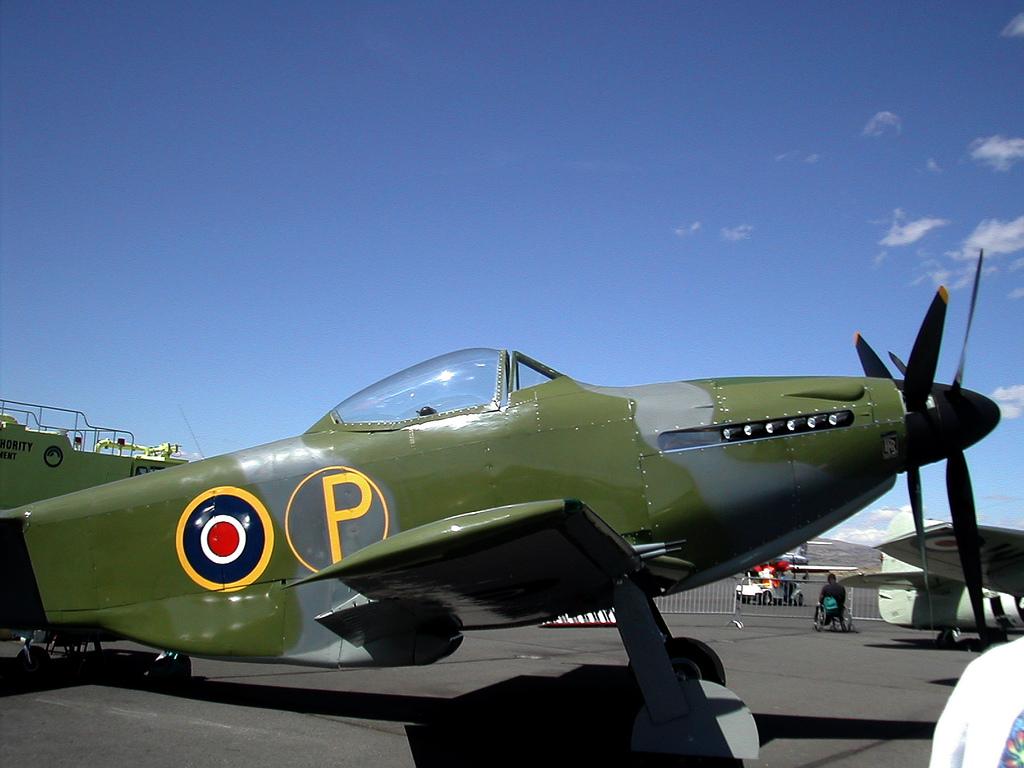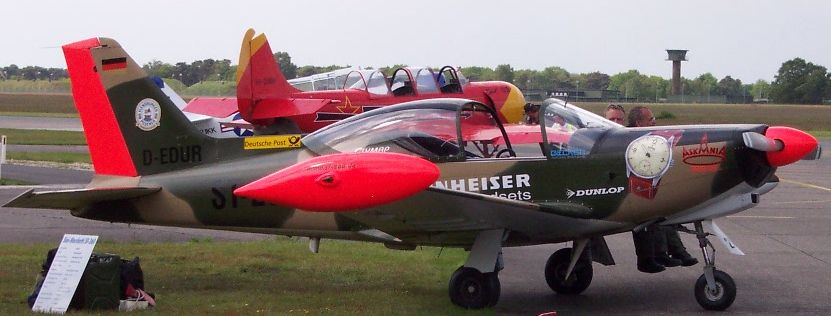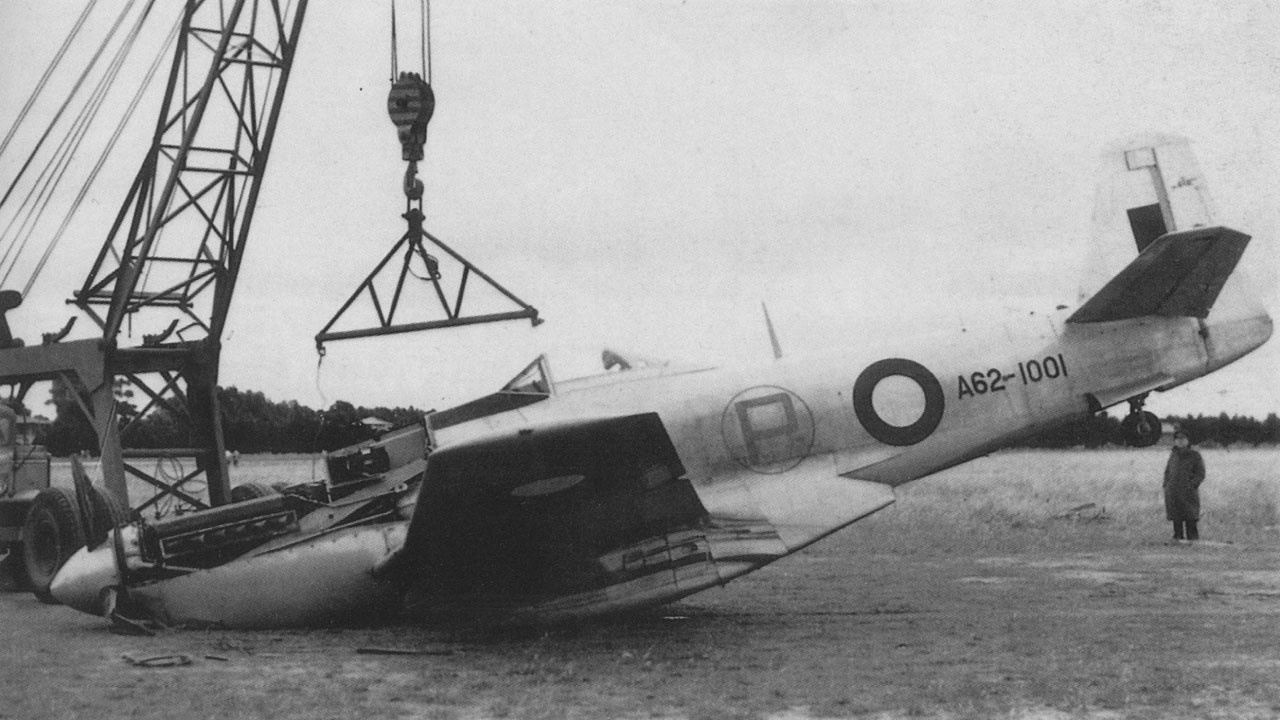|
VL Pyörremyrsky
The VL Pyörremyrsky ("Hurricane") was a Finnish fighter, designed by DI Torsti Verkkola at the State Aircraft Factory ('' Valtion lentokonetehdas'') for service with the Finnish Air Force in World War II. The war ended before the type's first flight and only a prototype was built. History On 26 November 1942 the Finnish Air Force ordered two ''Pyörremyrsky'' prototypes to be built. The aircraft were to be ready by May 1944. One prototype was later cancelled and only one aircraft was ever built. The aircraft designation ''VMT Pyörremyrsky'' is also sometimes used, as the factory had been formed into the State Metal Factories ('' Valtion Metallitehtaat'') during the construction of the aircraft. The Finnish Air Force airplane code letters PM gave the plane nickname ''Puu-Mersu'' (Wooden Messerschmitt), but the plane was an independent design. The use of wood in the construction of the aircraft was maximized due to the scarcity of metals. The goal was to create a fighter with simi ... [...More Info...] [...Related Items...] OR: [Wikipedia] [Google] [Baidu] |
Prototype
A prototype is an early sample, model, or release of a product built to test a concept or process. It is a term used in a variety of contexts, including semantics, design, electronics, and Software prototyping, software programming. A prototype is generally used to evaluate a new design to enhance precision by system analysts and users. Prototyping serves to provide specifications for a real, working system rather than a theoretical one. In some design workflow models, creating a prototype (a process sometimes called materialization) is the step between the Formal specification, formalization and the evaluation of an idea. A prototype can also mean a typical example of something such as in the use of the derivation 'prototypical'. This is a useful term in identifying objects, behaviours and concepts which are considered the accepted norm and is analogous with terms such as stereotypes and archetypes. The word ''wikt:prototype, prototype'' derives from the Greek language, Greek ... [...More Info...] [...Related Items...] OR: [Wikipedia] [Google] [Baidu] |
Tikkakoski
Tikkakoski is a northernmost residential area of Jyväskylä, Finland, about north of the city centre. It has a population of 6,000. The Jyväskylä Airport, Aviation Museum of Central Finland, and a Finnish Air Force base, with the FAF Headquarters, the Finnish Air Force Academy, Finnish Air Force, Air Force Academy, Finnish Air Force Band, Air Force Band, and the C4I Materiel Command, are all located in Tikkakoski. Gallery File:Jyväskylä airport apron.jpg, A view of the Jyväskylä Airport File:Jyväskylä airport terminal.jpg, Jyväskylä Airport Terminal in Tikkakoski File:Tikkakoski factory 1930s.jpg, Tikkakoski (company), Oy Tikkakoski Ab gun factory in the 1930s File:Gourdou-Leseurre GL-22 070707.JPG, Gourdou-Leseurre fighter aircraft in the Aviation Museum of Central Finland References External links Neighbourhoods of Jyväskylä {{WesternFinland-geo-stub ... [...More Info...] [...Related Items...] OR: [Wikipedia] [Google] [Baidu] |
Supermarine Spitfire
The Supermarine Spitfire is a British single-seat fighter aircraft used by the Royal Air Force and other Allied countries before, during, and after World War II. Many variants of the Spitfire were built, from the Mk 1 to the Rolls-Royce Griffon engined Mk 24 using several wing configurations and guns. It was the only British fighter produced continuously throughout the war. The Spitfire remains popular among enthusiasts; around 70 remain airworthy, and many more are static exhibits in aviation museums throughout the world. The Spitfire was designed as a short-range, high-performance interceptor aircraft by R. J. Mitchell, chief designer at Supermarine Aviation Works, which operated as a subsidiary of Vickers-Armstrong from 1928. Mitchell developed the Spitfire's distinctive elliptical wing with innovative sunken rivets (designed by Beverley Shenstone) to have the thinnest possible cross-section, achieving a potential top speed greater than that of several contemporary figh ... [...More Info...] [...Related Items...] OR: [Wikipedia] [Google] [Baidu] |
Reggiane Re
Officine Meccaniche Reggiane SpA (commonly referred to as ''Reggiane'') was an Italian industrial manufacturer and aviation company. Reggiane was founded during 1904 by its parent company Caproni, which was in turn owned by the aeronautical engineer Giovanni Battista Caproni. Throughout the company's existence, it was involved in numerous industrial activities, such as railways, agriculture, aeronautics, and processing machinery. During the first half of the Twentieth Century, Reggiane became well known for the design and production of aircraft. Through the development of the Re.2000, an all-metal monoplane, Reggiane gained a reputation for producing relatively agile single-seat fighter aircraft. Following the outbreak of the Second World War, the majority of Reggiane's fighter production was taken over by the ''Regia Aeronautica'' (the Italian Air Force). However, the company continued to manufacture and deliver fighters for various other neutral and Axis-aligned nations aroun ... [...More Info...] [...Related Items...] OR: [Wikipedia] [Google] [Baidu] |
Messerschmitt Me 209
The first Messerschmitt Me 209 was a single-engine racing aircraft which was designed for and succeeded at breaking speed records. This Me 209 was a completely new aircraft whose designation was used by Messerschmitt as a propaganda tool. Although the aircraft was designed only to break speed records, it was hoped that its name would associate it with the Bf 109 already in combat service.Lepage 2009, p. 220. The designation ''Me 209'' was given for propaganda purposes to cause confusion with the Messerschmitt Bf 109, the ''Luftwaffe''s primary fighter throughout World War II. It was later reused for the actual proposed successor to the Bf 109. Design and development The designation Me 209 was used for two separate projects during World War II. The first was a record-setting, single-engined race aircraft, for which little or no consideration was given to adaptation for combat. The second Me 209 was a proposal for a follow-up to the highly successful Messerschmitt Bf 109 wh ... [...More Info...] [...Related Items...] OR: [Wikipedia] [Google] [Baidu] |
Martin-Baker MB 5
The British Martin-Baker MB 5 was the ultimate development of a series of prototype fighter aircraft built during the Second World War. Neither the MB 5 nor its predecessors ever entered production, despite what test pilots described as excellent performance. Design and development Martin-Baker Aircraft began the MB 5 as the second Martin-Baker MB 3 prototype, designed to Air Ministry Specification F.18/39 for an agile, sturdy Royal Air Force fighter, able to fly faster than 400 mph. After the first MB 3 crashed in 1942, killing Val Baker, the second prototype was delayed. A modified MB 3 with a Rolls-Royce Griffon engine, rather than the Napier Sabre of the MB 3, was planned as the MB 4, but a full redesign was chosen instead.Baugher, Joe."Martin-Baker MB 5."''Aircraft of the World'', 19 November 1995. Retrieved 9 April 2006. The redesigned aircraft, designated MB 5, used wings similar to the MB 3, but had an entirely new steel-tube fuselage. Power came from a Rolls-Roy ... [...More Info...] [...Related Items...] OR: [Wikipedia] [Google] [Baidu] |
Hawker Tempest
The Hawker Tempest is a British fighter aircraft that was primarily used by the Royal Air Force (RAF) in the Second World War. The Tempest, originally known as the ''Typhoon II'', was an improved derivative of the Hawker Typhoon, intended to address the Typhoon's unexpected deterioration in performance at high altitude by replacing its wing with a thinner laminar flow design. Since it had diverged considerably from the Typhoon, it was renamed ''Tempest''. The Tempest emerged as one of the most powerful fighters of World War II and at low altitude was the fastest single-engine propeller-driven aircraft of the war. Upon entering service in 1944, the Tempest performed low-level interception, particularly against the V-1 flying bomb threat, and ground attack supporting major invasions like Operation Market Garden. Later, it successfully targeted the rail infrastructure in Germany and ''Luftwaffe'' aircraft on the ground, as well as countering similar attacks by German fighters. T ... [...More Info...] [...Related Items...] OR: [Wikipedia] [Google] [Baidu] |
Macchi C
Aermacchi was an Italian aircraft manufacturer. Formerly known as Aeronautica Macchi, the company was founded in 1912 by Giulio Macchi at Varese in north-western Lombardy as Nieuport-Macchi, to build Nieuport monoplanes under licence for the Italian military. With a factory located on the shores of Lake Varese, the firm originally manufactured a series of Nieuport designs, as well as seaplanes. After World War II, the company began producing motorcycles as a way to fill the post-war need for cheap, efficient transportation. The company later specialised in civil and military pilot training aircraft. In July 2003, Aermacchi was integrated into the Finmeccanica Group (now Leonardo) as Alenia Aermacchi, which increased its shareholding to 99%. Military trainers Since the beginning, the design and production of military trainers have been the core business of Alenia Aermacchi. The products include: * SF-260, piston-engined or turboprop-powered screener/primary trainer * MB- ... [...More Info...] [...Related Items...] OR: [Wikipedia] [Google] [Baidu] |
Fiat G
Fiat Automobiles S.p.A. (, , ; originally FIAT, it, Fabbrica Italiana Automobili di Torino, lit=Italian Automobiles Factory of Turin) is an Italian automobile manufacturer, formerly part of Fiat Chrysler Automobiles, and since 2021 a subsidiary of Stellantis through its Italian division Stellantis Italy. Fiat Automobiles was formed in January 2007 when Fiat S.p.A. reorganized its automobile business, and traces its history back to 1899 when the first Fiat automobile, the Fiat 4 HP, was produced. Fiat Automobiles is the largest automobile manufacturer in Italy. During its more than century-long history, it remained the largest automobile manufacturer in Europe and the third in the world after General Motors and Ford for over 20 years, until the car industry crisis in the late 1980s. In 2013, Fiat S.p.A. was the second largest European automaker by volumes produced and the seventh in the world, while FCA was the world's eighth-largest automaker. In 1970, Fiat Automobiles employ ... [...More Info...] [...Related Items...] OR: [Wikipedia] [Google] [Baidu] |
Curtiss XP-53
The Curtiss P-60 was a 1940s American single-engine single-seat, low-wing monoplane fighter aircraft developed by the Curtiss-Wright company as a successor to their P-40. It went through a lengthy series of prototype versions, eventually evolving into a design that bore little resemblance to the P-40. None of these versions reached production. Design and development The initial design contained in proposals to the United States Army Air Corps was for an aircraft based upon the P-40 design but featuring a low drag laminar flow wing, a Continental XIV-1430-3 inverted vee engine, and eight wing-mounted 0.5 in (12.7 mm) machine guns. This proposal was accepted and a contract for two prototypes was issued on 1 October 1940 with the aircraft designated the XP-53. Within two months the Army Air Corps modified the contract to require the second prototype be completed with a Rolls-Royce Merlin engine in place of the XIV-1430. That aircraft was re-designated XP-60. The airfra ... [...More Info...] [...Related Items...] OR: [Wikipedia] [Google] [Baidu] |
CAC CA-15
The CAC CA-15, also known unofficially as the CAC Kangaroo, was an Australian propeller-driven fighter aircraft designed by the Commonwealth Aircraft Corporation (CAC) during World War II. Due to protracted development, the project was not completed until after the war, and was cancelled after flight testing, when the advent of jet aircraft was imminent. Design and development During 1943, following its success in rapidly designing and mass-producing the Boomerang fighter for the Royal Australian Air Force (RAAF), CAC began design work on a fully-fledged interceptor and escort fighter. Because the Boomerang had become more and more obsolete against Japanese fighters like the Mitsubishi A6M Zero, Sir Lawrence Wackett (as head of CAC) proposed designing a new high-performance fighter from scratch. Fred David, who had designed the Boomerang, was to lead an in-house design team at CAC. In June 1943, the design concept proposal was approved by the government and RAAF, which issued ... [...More Info...] [...Related Items...] OR: [Wikipedia] [Google] [Baidu] |
MG 151/20
The MG 151 (MG 151/15) was a German 15 mm aircraft-mounted autocannon produced by Waffenfabrik Mauser during World War II. Its 20mm variant, the 20 mm MG 151/20 cannon, was widely used on German Luftwaffe fighters, night fighters, fighter-bombers, bombers and ground-attack aircraft. Salvaged guns saw post-war use by other nations. Development and wartime history (MG 151/20) The pre-war German doctrine for arming single-engine fighter aircraft mirrored that of the French. This doctrine favoured a powerful autocannon mounted between the cylinder banks of a V engine and firing through the propeller hub, known as a ''moteur-canon'' in French (from its first use with the Hispano-Suiza HS.8C engine in World War I, on the SPAD S.XII) and by the cognate ''Motorkanone'' in German by the 1930s. The weapon preferred by the French in this role was the most powerful 20mm Oerlikon of the time, namely the FFS model, but this proved too big for German engines. Mauser was given the ... [...More Info...] [...Related Items...] OR: [Wikipedia] [Google] [Baidu] |



.jpg)

_(Art_IWM_ART_LD_4588).jpg)




